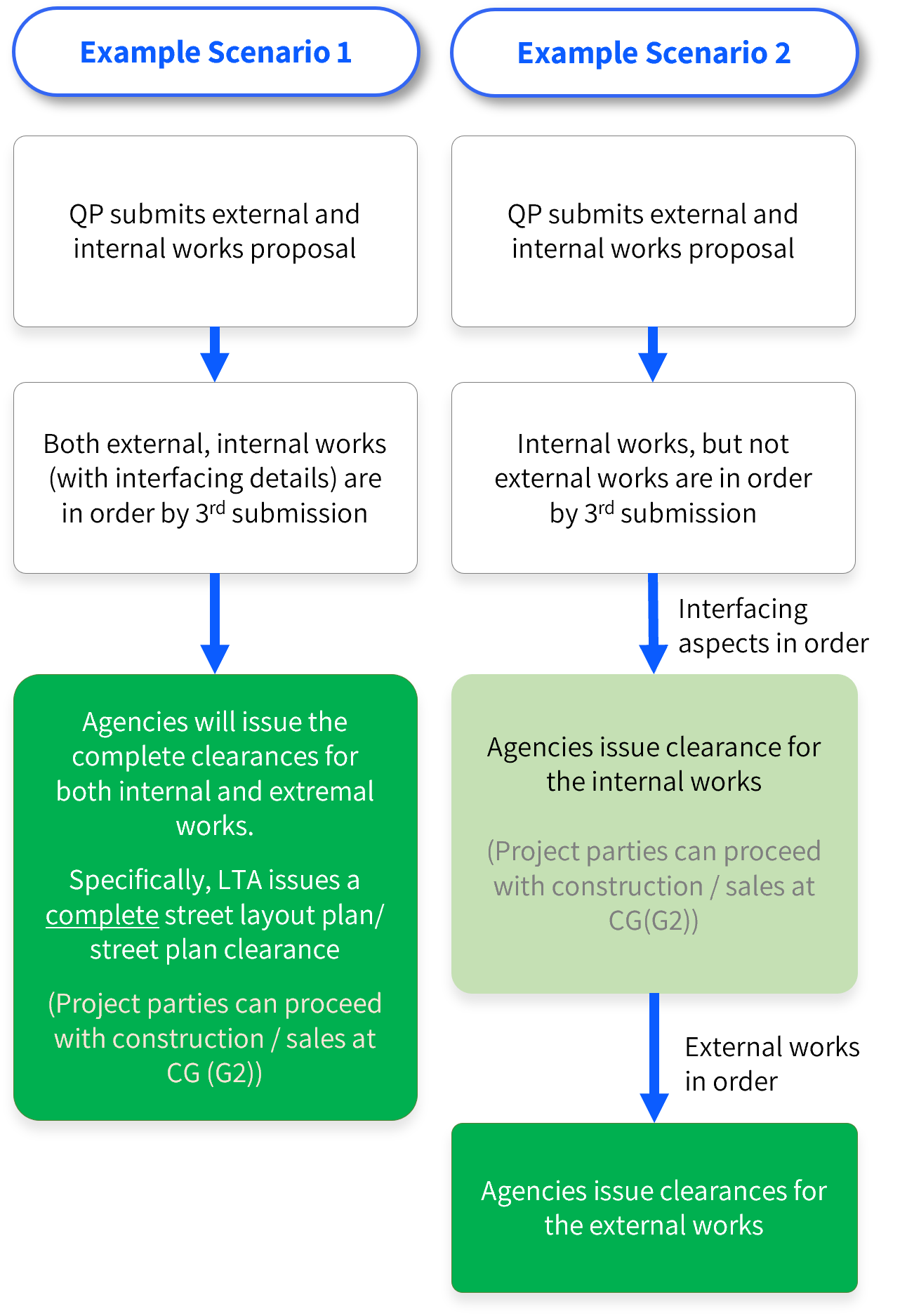LTA considers the following as interfacing aspects:
| S/N | Interfacing Aspect | Remarks |
|---|---|---|
| 1 | Vehicular Access Points
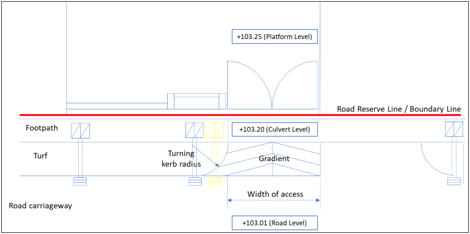 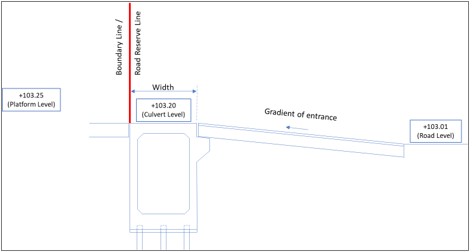 | Vehicular accesses have a significant impact on the development layout and have to be coordinated with the proposed Minimum Platform Level imposed. Figures: S3 – Fig 7 (top): Plan view of an access S3 – Fig 8 (bottom): Cross-section view of an access |
| 2 | Pedestrian Access Points
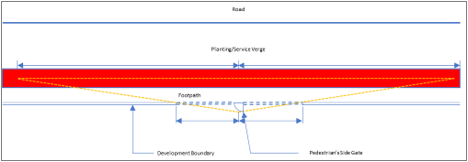 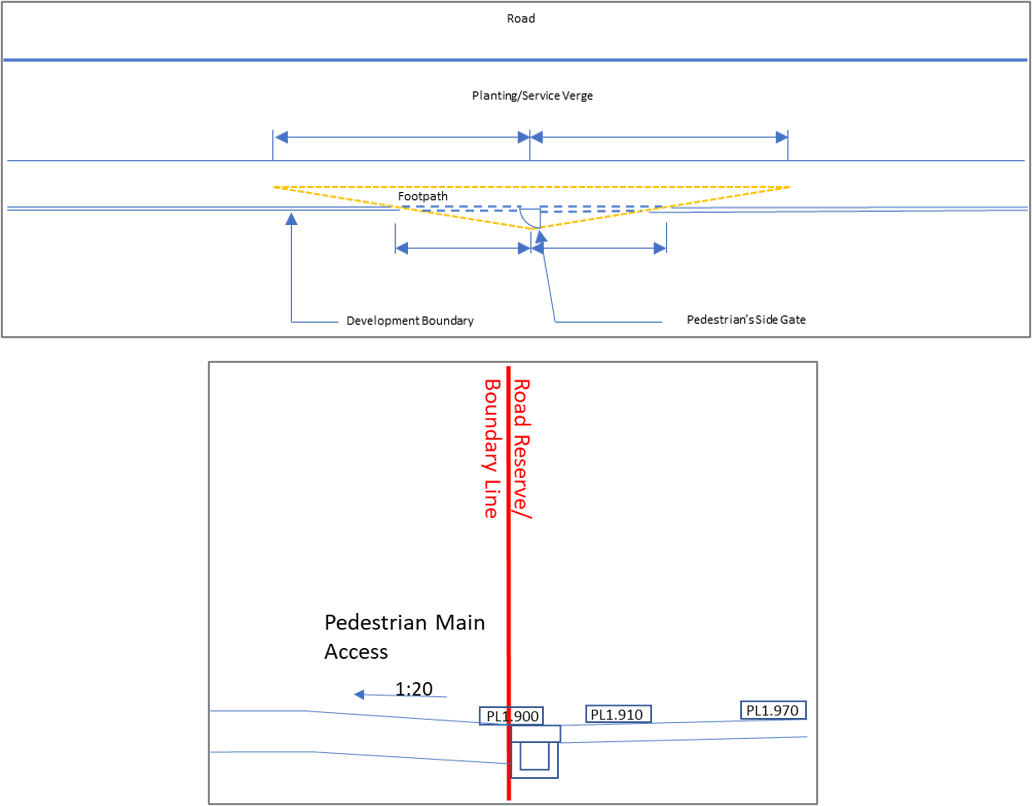 | Pedestrian accesses have to be designed with respect to the internal layout and the external amenities of interest to development users. Figures: S3 – Fig 9 (top): Plan view of pedestrian access interfacing with footpath & cycling path (with sight visibility triangle) S3 – Fig 10 (middle): Plan view of pedestrian access interfacing with a shared path (with sight visibility triangle) S3 – Fig 11 (bottom): Cross-section of a pedestrian access interfacing with a footpath |
| 3 | Cyclist Accesses (Please refer to typical section and plan view in S/N 4) | Cyclist accesses have to be designed with respect to internal bicycle parking facilities and the surrounding road network. One of the important design issues is the provision of adequate sight distance at the development accesses and inner radius of road bends. Figures: Refer to typical section and plan view in S/N 4. |
| 4 | Covered Linkways (At grade connections between the development and road reserve)
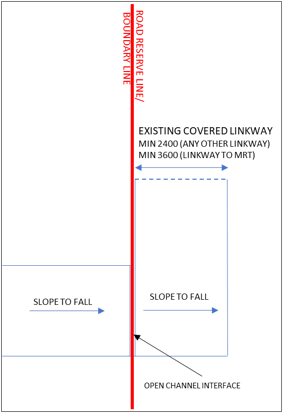 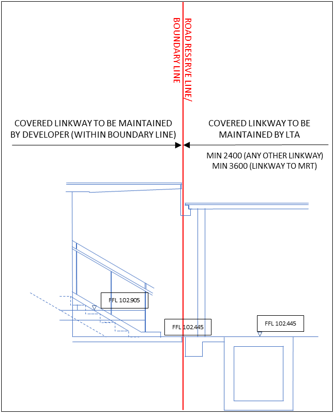 | Covered linkways have to be designed with respect to the internal layout and the external amenities of interest to development users. Figures: S3 – Fig 12 (left): Roof plan of a sheltered walkway interfacing with an existing covered linkway (within the road reserve) S3 – Fig 13 (right): Cross-section of a sheltered walkway interfacing with an existing covered linkway (within the road reserve) |
| 5 | Pedestrian Overhead Bridges (POBs) (Elevated connections between the development and
road reserve)
-top-view.png?sfvrsn=5621a8b7_1) -cross-section-view.png?sfvrsn=bfbaa342_1) | Direct linkages between POBs and developments have to be designed to ensure that the levels of the POB and development can match. Figures: S3 – Fig 14 (left): Plan view of an elevated walkway interfacing with an existing POB (within the road reserve) S3 – Fig 15 (right): Cross-section of an elevated walkway interfacing with an existing POB (within the road reserve) |
| 6 | Pedestrian Underpasses (PUPs) (Subterranean connections between the development and road reserve) | Direct linkages between PUPs and developments have to be designed to ensure that the levels of the PUP and development can match. |
| 7 | Bus Stops (If directly interfacing with the development) | Interfacing (if any) between bus stops and developments have to be coordinated. |
| 8 | Taxi Stands (If directly interfacing with the development) | Interfacing (if any) between taxi stands and developments have to be coordinated. |
| 9 | Covered Walkways | Covered walkways have to be designed in relation to the open walkways for barrier-free access. |
| 10 | Vertical Profile of New Street (If the proposal involves the construction of a new street and / or widening of existing roads) | It is important to establish the vertical profile of the new street/widened street, which determines all other interfacing aspects, such as development platform levels, drainage levels, access levels, as well as the levels of any existing structures (while complying with the current design requirements). |
Clearances and Conditional Approvals
- LTA will issue a Layout Plan Clearance (Street & Parking) at the Design Gateway (G1), as well as a Street Plan Clearance and Vehicle Parking Building Plan Clearance at the Construction Gateway (G2), when both the proposed works within the development boundary and external works are designed in accordance with the prevailing standards.
- In a scenario where the proposed works within the development boundary are in order, whereas the external works are still under review, LTA may issue separate Layout Plan and Street Plan Approvals, for internal and external works. For LTA to issue a conditional approval, all interfacing aspects shown within the external works proposal must be designed in accordance with the prevailing standards.
- The approvals for internal works granted by LTA once the interfacing aspects have been agreed, will help to expedite the clearance and completion of the projects, notwithstanding the requirement for combined submission under CORENET X. QPs are required to follow up and obtain the agencies’ full external works clearances, before advancing to the next regulatory gateway.
